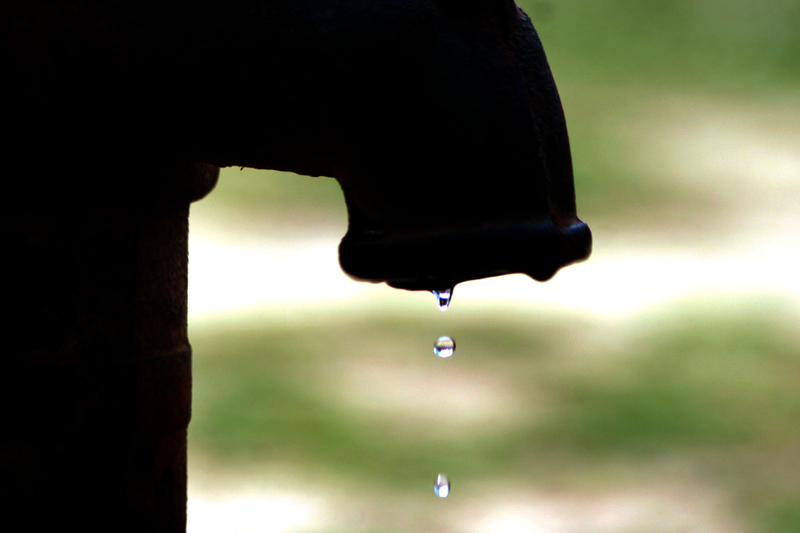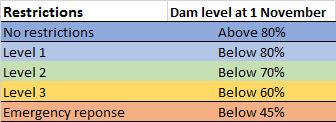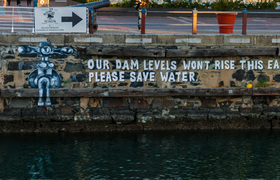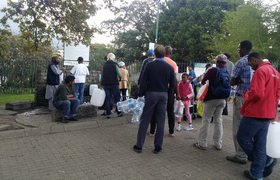Cape Town’s Water Strategy: what to watch
22 July 2019 | Story Kevin Winter. Read time 8 min.
Cape Town’s Water Strategy was approved by the City Council on 30 May 2019 following a period of public comment. With a mere 200 public responses, there was much less interest in the water strategy when compared with the 55 000 comments received on the city’s website alone responding to the 2018 drought levy, which would have imposed an additional cost to ratepayers based on property value.
The water strategy required a different level of engagement. It is not that the public had lost interest in the water crisis, but the water strategy draft document was a difficult, long read that covered a host of ambitious plans and aspirations. However, the importance of the water strategy shouldn’t be underestimated.
There are plenty of other cities in the world that have dedicated water strategies in place, for example, Perth, Melbourne and Singapore. It is not that the City of Cape Town has never had plans and regulations for governing water management before, but the new strategy is different in that it is the first roadmap to support Cape Town in becoming more resilient to drought, climate change and other water-related shocks and stresses. At its simplest, the strategy is about avoiding another Day Zero. It is also about building a more equitable, socially just city by improving access to water and sanitation – something that received limited attention during the water crisis.
“At its simplest, the strategy is about avoiding another Day Zero. It is also about building a more equitable, socially just city by improving access to water and sanitation.”
The lessons of Day Zero taught the city to take a much stronger lead in securing and managing its water resources. These lessons are being incorporated into the water strategy, which aims to ensure:
- Safe access to water and sanitation
- Wise use of water
- Sufficient, reliable water from diverse sources
- Shared benefits from regional resources
- A water sensitive city by 2040.
If the city is to achieve these measures – all of them – then it will need an extraordinary capacity to overcome a multitude of significant challenges. In doing so, we, the public, need the tools to track the city’s performance to achieve these commitments.
While the final strategy document is not available as yet, city officials are working on a new format and design that will make it far more accessible and useful for the public. This final document can then be used to track the city’s progress in achieving the five central commitments of the strategy.
Three indicators
There are three obvious indicators in the water strategy that deal with water supply, demand management and revenue collection. These indicators can be used to check on progress – what is or isn’t happening.
Diverse water supplies
Over the next 10 years, the city has committed itself to invest in alternative water sources, such as desalination, reuse and groundwater, which will increase supply by more than 300 million litres per day at a cost of approximately R5.4 billion (2018 rands). This commitment should be easy to observe as primary indicators of progress. By 2040 we can expect a reduction in the supply of water from storage dams to about 75% as compared with the current supply of 95%.

Managing restriction levels
In the past, restriction levels have changed too often and have left users confused about the stages of compliance. The water strategy proposes that future restrictions will be based on the volume of stored water in the dams as of 1 November at the beginning of each hydrological year (see Table 1). The proposal makes sense because restrictions will be imposed or lifted against a predetermined volume of stored water rather than a financial model that is aligned to generating income. So, for example, if the proposed model had been used on 1 November 2015 when dam levels were a little over 60% then Level 2 restrictions could have been implemented earlier, and the concept of Day Zero could perhaps have been avoided.
Improved revenue collection
It’s obvious that a sustainable water infrastructure system must have a reliable income stream. During 2017/18 only 70% of revenue from water users was collected. Without income the system becomes unstable and inefficient. The city aims to improve its revenue collection by achieving a collection rate of 95% or more. It will do so by “reducing the number of estimated meter readings, improving billing accuracy, making bills easier to understand, making it easier for customers to pay, and resolving account queries speedily” (City of Cape Town draft Water Strategy, 2019).
Missing indicators

The foregoing indicators are reasonably obvious and easy to track. What is more difficult is tracking three crucial areas that are hallmarks for transforming Cape Town into a socially just, water-sensitive and regionally conscious city.
Safe access to water and sanitation is a massive challenge and it is where progress is most likely to stall given the overwhelming odds. How do you measure safe access? The city could be asked to report on the number of new toilets it has installed each year, but this is unlikely to sustain much public interest over time. Broader measures could include reducing the volume of untreated effluent and open defecation in under-serviced settlements in the city. In other parts of the world this is tracked using what is impolitely known as the “shit flow diagram”.
Similarly, the water strategy offers no indicator to reflect how Cape Town is going to make progress towards becoming a water-sensitive city. However, if we accept that the health of the city is seen in its waterways, then we need look no further than the water quality and biodiversity of the city’s rivers and wetlands. Surface-water-quality data is collected monthly in many of the city’s waterways, but the information is not publicly available. Why not? A shared understanding of the state of our waterways is crucial to building public trust and confidence – and the water strategy repeatedly refers to this aspect in its value statements.
“A shared understanding of the state of our waterways is crucial to building public trust and confidence – and the water strategy repeatedly refers to this aspect in its value statements.”
Finally, the water strategy provides limited guidance on how progress will be achieved in sharing regional water supplies between Cape Town and the agricultural sector and surrounding towns that fall in the same catchment. While progress can be measured against an adequate, sustainable allocation of water for each sector and municipality, it also calls for a qualitative account that measures increasing levels of maturity in the relationships and decisions between local and national water and sanitation authorities.
Turning commitments into action
The final water strategy document is eagerly awaited. It is not likely to be received with much public fanfare, nevertheless it is a crucial roadmap for the future of the city and one that needs to be kept alive.
The lessons from “Day Zero” are embodied in the five commitments of the strategy. Well-crafted words in the document now need to find their way into measurable actions.
 This work is licensed under a Creative Commons Attribution-NoDerivatives 4.0 International License.
This work is licensed under a Creative Commons Attribution-NoDerivatives 4.0 International License.
Please view the republishing articles page for more information.










